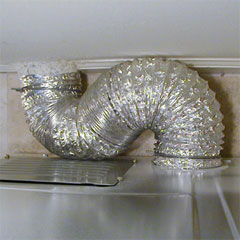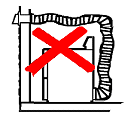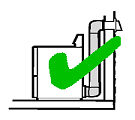Preventing Dryer Vent Fires

Image: allianceairqualityservices.com
Dryer Duct and Vent Fires
Dryer vents should be cleaned in order to increase the airflow through your dryer and as a major step toward preventing dryer vent fires.
By cleaning your dryer vent regularly, you increase airflow efficiency, decrease cost of dryer operation, reduce the amount of time required for clothes drying and prevent plug ups which cause problems.
Yearly Dryer Related Fires
The U.S. Consumer Product Safety Commission estimates that over 15,000 dryer-related fires occur each year, causing an estimated $ 97 million in property loss.
Lint Buildup Is the Culprit
Clothing lint builds up inside the dryer vent, on the heating element and in other places in the dryer, reducing airflow, cause it to run hotter, overheat, waste energy and very possibly catch on fire.
Clogged dryer vents cause your dryer to work harder and greatly increase the time it takes to dry your clothes [up to 2 or 3 times more] which wastes energy and increases your operating / energy costs!
Signs Of A Duct Blockage
1. It takes a long time to dry your clothing.
2. Clothing is hotter than usual at the end of the drying cycle.
3. The vent flap on outside vent hood does not open when dryer is on.
4. The dryer shuts off early, before the timer ends its drying cycle.
Tips To Increase Dryer Efficiency
Inside the Dryer:
Empty the lint screen each time you use the dryer.
Use a vacuum with a nozzle attachment to clean in the lint trap and any place it will reach.
Every three years, have the dryer taken apart and thoroughly cleaned by a professional.
Outside the Dryer
Keep dryer ducts as short and as straight as possible. [Check your dryers manufacturers specifications for duct lengths and follow them]
Check the outside exhaust vent to make sure dryer exhaust air is escaping, visually inspect that the exterior vent flap is opening and there are no clogs.

Disconnect, clean and inspect your dryer duct run on a regular basis.
[photo below of a duct cleaning brush]
Use Metal Duct-Work
Use only metal ducts. Avoid the flimsy plastic or foil ducts.
Check for kinks in the duct, crushed sections, excessive amounts of elbows or long duct runs; all of which, which can greatly reduce the airflow. The less turns or bends in the duct the more efficient.
Avoid pushing the dryer tight to the back wall to avoid crushing the duct. Consider installing a dryer box. A Dryerbox “safely and efficiently collects the flex transition hose, allowing the dryer to be installed flush against the wall.” See photo:
BEFORE: installing a Dryer Box:

AFTER: installing a Dryer Box:

stay safe ~ concord carpenter















